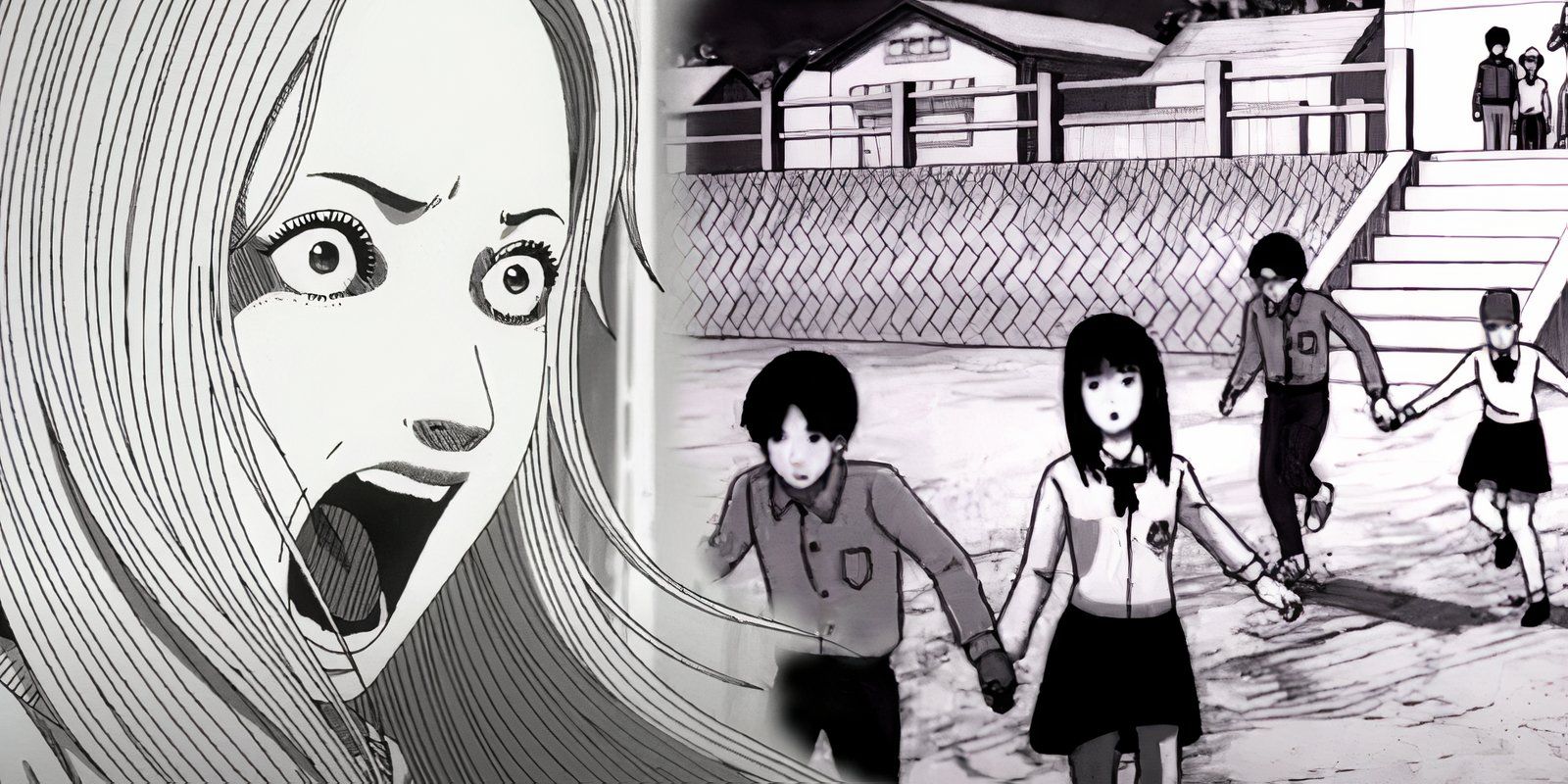
Warning: Spoilers ahead for Uzumaki Episode 2!An incredibly subtle detail in the latest episode of Uzumaki is actually a genius way to adapt the story. There is no doubt that the second episode of the long-awaited miniseries based on Junji Ito’s iconic manga was a disappointment for fans. The perceived shift in animation quality led to even the executive producer talking about the controversy. However, a bright side of this episode is a pretty genius detail that likely went under the radar for some fans.
During some of the more intense moments of Uzumaki Episode 2, such as the sequence when Kazunori and Yoriko twist together on the beach in an adaptation of one of the manga’s most terrifying chapters, there is a little noticeable shift in how the anime looks. There are small imperfections that appear and disappear when the frame around the scene begins to darken. basically, Uzumaki Use film grain in these sequences to give it an old-school feel caused by film deterioration. With this technique, it manages to bring a new level of horror to Junji Ito’s story that could only be shown through anime.
The use of film grain makes the spiral curse feel otherworldly
The anime technique adds a new layer to Ito’s terrifying artwork
What works about this stylistic choice for the Uzumaki Anime is that it is used sparingly. It’s only really at moments in the story when the curse in Kurouzu-cho ramps upShowing an undeniable scene where something strange is going on. The rest of the episode is shown in its usual style up to this point, as the curse continues to haunt the city and its citizens. However, once it does hit, the addition of this filmmaking style adds depth to an already horrifying picture.
With this subtle change in visual tone, The curse placed on the city feels awkward and supernatural as the degradation of the quality of the film slowly grows more profound. The beach scene in particular makes great use of this technique with how dark it gets as Yoriko and Kazunori twist their bodies and wrap around each other. It makes the whole sequence feel like an old horror movie lost to time, and it works in its favor as it aligns with how twisted the concept of Uzumaki Can be.
Uzumaki’s slight change in style could only be done through anime
Junji Ito could never recapture that feeling on the page the same way
The spiral curse in the original story is meant to have a Lovecraftian feel as he stretches the limitations of the human body to have his characters conform to the twisted form. Junji Ito is able to perfectly give off this strange feeling through his unique artwork that has left fans with nightmares for decades. This is why many adaptations of his work have struggled over the years, because they could never really capture what made the images so scary on paper. However, the stylistic choice made in the anime adaptation is Something that Ito can never really recreate.
FIlm deterioration is something that benefits from movement on the screen to fully articulate its grainy design. Seeing the spots and lines appear and disappear in the blink of an eye is something that is unique to the film medium. This subtle design choice is a brilliant way to enhance an already disturbing piece of artwork and adapt it to the screen in a way the author of the story never could. This gives an invisible feeling that only film can provide, setting the stage for how future adaptations of Ito’s work could be done in the future.
Is the film grain included to circumvent a drop in animation quality?
Uzumaki’s best design choice could happen by accident
What’s fascinating about this shift in design for the Uzumaki Anime is like it could possibly have happened by mistake, rather than an intentional choice. Episode 2 had fans raving about its noticeable decrease in quality, especially when compared to the beautifully animated first episode of the miniseries that suggested a future big adaptation. With this in mind, it is entirely possible that The unique moments were only used to hide some of the more shocking moments in the animation. This would make sense during the more horrific sequences because of how much the imagery stretches the imagination. If that’s the case though, it worked to the benefit of the series.
Regardless of the reason for this choice in design, it’s a stellar inclusion that serves as a bright spot for an otherwise disappointing second episode. It allows Junji Ito’s original story to be adapted to a new medium and also enhances images that are already terrifying in the original manga. It’s a super subtle shift in design, but at the same time, it’s a genius decision that adds up Uzumaki‘s legacy as one of the greatest horror stories of all time.
Uzumaki: Spiral into Horror is an adaptation of Junji Ito’s acclaimed manga, directed by Hiroshi Nagahama. The series unfolds in the city of Kurôzu-cho where inexplicable events related to spirals plague the inhabitants, leading to terror and madness. Highlighting the psychological and supernatural, the show follows high school student Kirie Goshima and her boyfriend, Shuichi Saito, as they confront the spiraling horrors that engulf their town.

